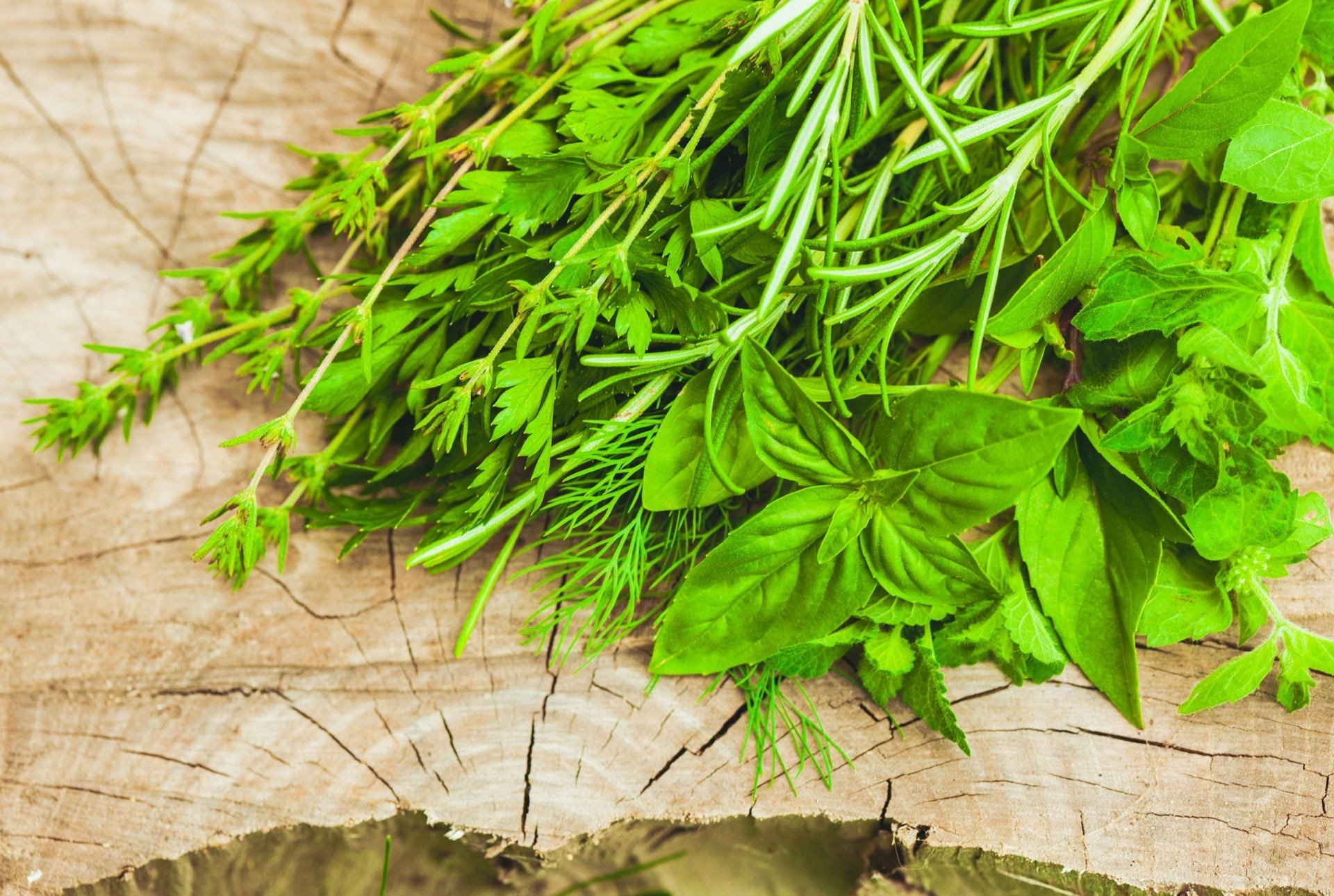Real Food Encyclopedia | Rosemary and Thyme
Culinary herbs tend to fall into two major camps — green and leafy (think parsley, cilantro and basil) and woody/twiggy, which brings us to rosemary and thyme. Many of you have twiggy herbs on those grocery lists for Thanksgiving or will be busy clipping from your (or a neighbor’s) backyard stash. Autumn and winter cookery would be a lot less interesting in the absence of these assertively flavored twigs — can you imagine a thyme or rosemary-less roasted chicken or stuffing without the sage (another card-carrying member of the twiggy nation)?
Fun Facts about Rosemary and Thyme:
- Thyme has made its mark in literature. In “A Midsummer Night’s Dream,” the beloved 16th century comedy by William Shakespeare, Oberon, king of the Fairies, says to Puck, the court jester, that “I know a bank whereon the wild thyme blows,” which also refers to the commonly held notion that thyme brings out the fairy in all of us.
- According to “The Spice Lover’s Guide to Herbs and Spices” by Tony Hill, both Cajun and Creole dishes favor thyme, probably because of its ready availability as a wild species in the earliest days of settlement of the Louisiana territory.
- In England, where it was likely introduced in the late 11th century, rosemary figured into wedding ceremonies as a symbol of fidelity.
What to Look for When Buying Rosemary and Thyme
You want twigs with perky green leaves or needles, nothing brown or dried up. Over the years shopping at farmers’ markets, we’ve noticed that growers uphold their commitment to seasonality and bundle twiggy herbs for sale only when it’s their time. If you’re lucky enough to have a market still open for Thanksgiving shopping, you may notice bundles of rosemary, thyme and sage, just in the nick of time. At the supermarket, you’ll see plastic clamshell containers of herbs, which are typically expensive and often past their peak. Take a peek inside those containers to make sure.
Sustainability of Rosemary and Thyme
Because of their continued small-scale and homegrown status, twiggy herbs are absent from the Environmental Working Group’s Shopper’s Guide to Pesticides in Produce, at least for the time being.
Seasonality
Twiggy herbs like rosemary and thyme are in season from late spring through late fall — and longer if you live in a temperate climate. Once the temperature dips into the 20s, your twigs may surrender until next year.
Geography
Both rosemary and thyme are ancient plants native to the Mediterranean. Both plants like a temperate climate and tend to flourish in spring and summer, when they’ll flower and beckon the honeybees. Although neither likes the extreme heat, rosemary tends to be more tolerant of chilly weather, as long as the temperature doesn’t dip too far below freezing.
Both are members the mint family and thyme is the apparent elder, a veteran of Mesopotamia, the cradle of civilization. Archeologists have unearthed Sumerian cuneiform tablets from around 2750 BC that make references to thyme used as a poultice. Babylonian physicians used it as an antiseptic, the Egyptians used the oil for embalming and the Romans, who thought of it as a symbol of courage, took it on the road into Europe.
A few thousand years after thyme earned a spot in the ancients’ spice rack, rosemary, thyme’s equally wild but decidedly more fragrant relative, shows up on sea cliffs of ancient Greece and neighboring Mediterranean spots around 500 BC. According to some sources, Roman scholar Pliny the Elder was smitten with rosemary, which he allegedly named ros (dew) marinus (of the sea). The name may also be referring to the dew-like silvery appearance of the plants’ signature needles. Ancient Greek and Roman students apparently would wear rosemary sprigs in their hair to help them concentrate; the twig has also been touted as the “herb of remembrance,” as a way to memorialize the dead.
Eating Rosemary and Thyme
Storing
If you can, keep twigs in their dirt and snip when ready to use. For purchased bundles (especially those sold in plastic), place in a small jar filled with water and keep on the counter.
Twigs don’t like moisture so resist the urge to wrap in a damp towel and store in the refrigerator.
Cooking
To remove herbs from twigs, your hands are better, more exacting tools than kitchen shears. With one hand holding the twig, place the other at the top of the twig and slide your fingers along the length of the twig. Greenery should glide right off.
Whole sprigs of thyme can add layers of flavor to sauces, beans, soups and stews (just remove before serving). Because rosemary is more assertive, try chopping the herb finely and mixing it with garlic, salt or lemon zest. Rosemary loves playing with fat, which is why it pairs well with roasted meats and olive oil.
Fresh thyme is a component of bouquet garni, the classical French sachet for seasoning soups and stocks (which also includes parsley and bay leaf). Dried thyme figures into herbes de provence, the popular spice blend of the South of France.
Nutrition
Both rosemary and thyme deliver on the nutritional front: One teaspoon of ground thyme is a good source of calcium, potassium, magnesium, phosphorus, iron and Vitamin A. One teaspoon of dried rosemary does all that, and adds magnesium and Vitamin C!
Rosemary also delivers on the polyphenol/antioxidant front. It’s rich in rosmarinic acid which fights inflammation and in carnosol and rosmanol, polyphenols with anti-carcigenic powers.


